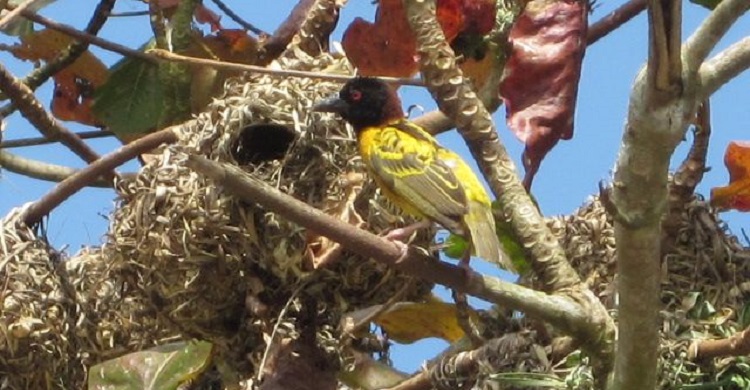Study Group Launched to Support CMS Migratory Landbirds Action Plan

Black-necked Weaver © Robert Vagg
Bonn, 29 March 2014 - The Migratory Landbirds Study Group (MLSG) was launched at an inaugural meeting “Migratory landbirds: research, monitoring and conservation” in Wilhelmshaven (Germany) on the 26-28 March 2014. The meeting was hosted by the Institute of Avian Research “Vogelwarte Helgoland”, one of the oldest and largest ornithological research institutions in the world.

Professor Dr Franz Bairlein, Director of the Institute, said: “The establishment of the Migratory Landbirds Study Group is a milestone. The group will play a key role in identifying primary research and monitoring gaps in support of the CMS Migratory Landbirds Action Plan”.
African-Eurasian migratory landbirds include common and familiar species that breed in Europe and Asia and undertake long migrations to wintering areas in Africa. Species such as the Common Cuckoo, the Eurasian Blackbird or the Turtle Dove are included in this group. Overall there are 5 species included in Appendix I and 85 in Appendix II of CMS.
Long-term datasets shows that African-Eurasian landbirds are declining rapidly. The species that breed on agricultural land and have to cross the Sahara to winter in open savannahs are most affected. Migrant birds are likely to be more susceptible to environmental change than resident ones, as their complex annual cycle, long-distance migrations and dependence on different sites at different times expose them to multiple threats.
Experts consider that human-related habitat change is the most important factor affecting African-Eurasian landbirds across the breeding and non-breeding grounds. Unsustainable taking and climate change are additional threats.
Since intergovernmental cooperation is essential to conserve migratory landbirds effectively along their flyways, CMS Parties adopted a Resolution at COP10 in 2011 requesting that an African-Eurasian Migratory Landbirds Action Plan (AEMLAP) be elaborated. A working group was established to that effect under the Scientific Council and a special workshop was organized in Ghana in 2012 to discuss the topics and priorities that should be included in the action plan.
The AEMLAP aims to improve the conservation status of migratory landbird species in the African-Eurasian region. The overall goal is to develop an initial overarching, strategic framework for action at the international level to conserve, restore and sustainably manage populations of migratory landbird species and their habitats. This complements the work of AEWA and the CMS Raptors MOU to restore the conservation status of other African-Eurasian bird species. The Action Plan covers 34 globally threatened species with declining global population trends.
The Action Plan has a focus on habitat conservation, illegal taking, research and education. One of the actions, in particular, encourages the development of a network focusing on research and sharing information which will involve specialists and organizations dealing with monitoring and conservation of migratory landbird species. This has provided the basis for establishing the MLSG, tasked with collecting, consolidating and distributing research relating to migratory landbird conservation - and information on monitoring in the action plan area.
Although independent ofCMS, the MLSG will maintain strong links to the landbirds working group to act as an information conduit that will directly inform delivery of other actions contained within AEMLAP. The aims of the MLSG will be to maintain contact between both amateurs and professionals studying migratory landbirds, help organize international co-operative studies, and act as a platform for exchange of information on migratory landbirds and their biology, and to promote scientific capacity building throughout the flyway.
In order to facilitate communication and improve public awareness, it is also planned to establish the Friends of the Landbirds Action Plan (FLAP). This initiative will use social media to provide a forum for all interested laymen to follow, support and contribute to the implementation of the AEMLAP.
Last updated on 11 April 2014


